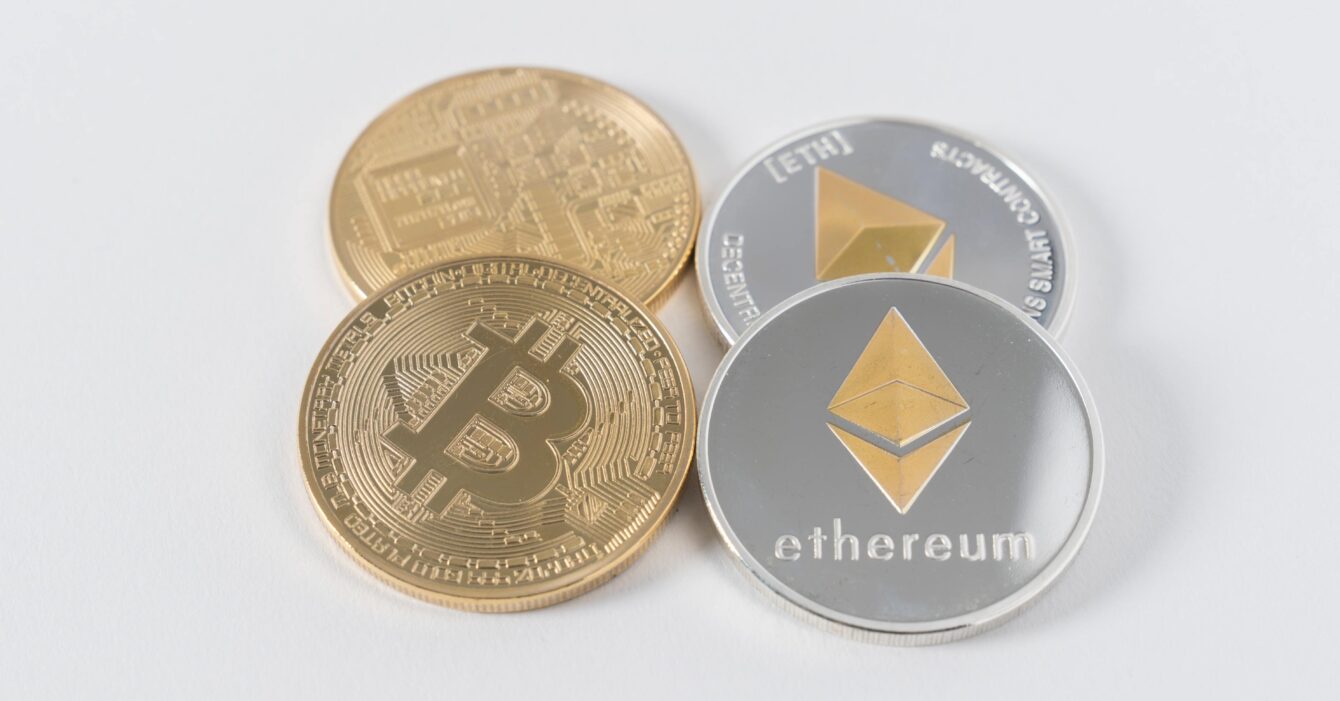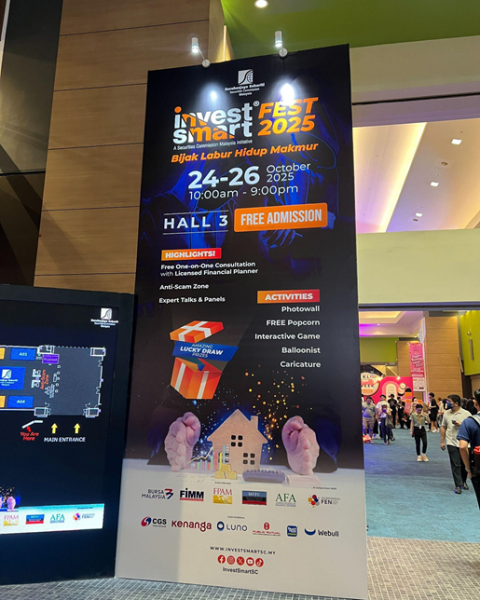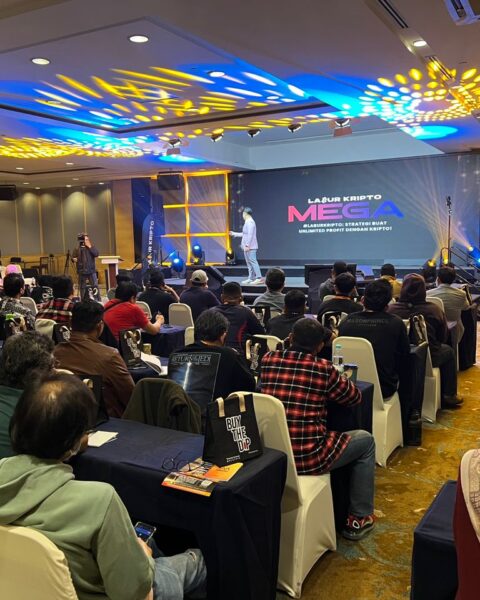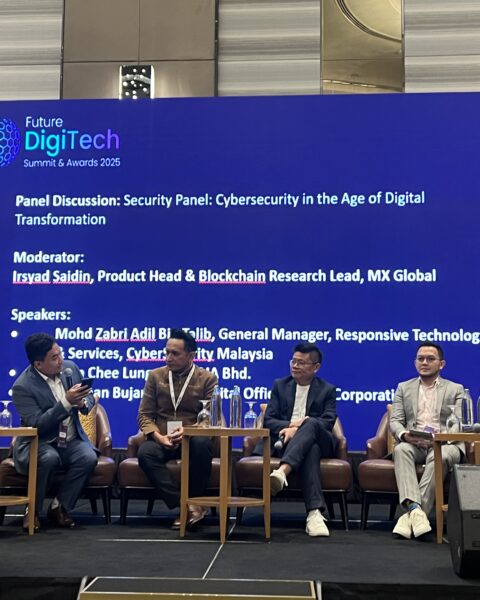Cryptocurrency is more than simply a new investing instrument; it symbolizes a whole other universe when compared to traditional equities and bonds. Even for experienced conventional investors, mastering the basics takes time due to unfamiliar terminologies, emerging technologies, and catching up with memes and tweets.
DApp. Ethereum. HODL. These are not the words of a recent discovery of strange language. They are among the numerous unique and important phrases in the bitcoin language.
It’s critical to know exactly what you’re investing in before you begin, just as it is with any other investment. This seems to be doubly true for a volatile and still-evolving investment like cryptocurrency.
However, another component you should include on your agenda is at least a basic understanding of what you’re getting into, such as how crypto differs from traditional investing methods and the numerous factors that can influence the market value of a cryptocurrency.
Here are some terminology and phrases to help beginners grasp the world of the cryptocurrency better.
[RELATED]: Crypto News: A Weekly Review
The Crypto Termilonogies That You Need to Know:
Altcoin- Anything that isn’t Bitcoin. Altcoins can range in value from the second most popular currency, Ethereum, to hundreds of coins with relatively little market capitalization.
Address- On the blockchain, cryptocurrency transactions are identifiable by unique addresses. Consider the blockchain to be a GPS system, and your bitcoin address to be the intended postal address. There is no currency recorded without an address; the blockchain cannot acknowledge or verify its existence. As a consequence, you cannot possess a coin unless you have a valid wallet address.
The value of your wallet is modified depending on your address every time a transaction is verified. Addresses may come in a variety of forms according to the currency, however, they mostly look like this:17VZNX1SN5NtKa8UQFxwQbFeFc3iqRYhem (An example of the address).
Arbitrage- Arbitrage in cryptocurrency refers to profiting on a difference in prices among two separate exchanges. Assuming Bitcoin is selling for RM8,950 on one exchange and RM9,000 on that other, a trader can purchase it on the first and sell it on the second with just a little profit.
ATH- The term “ATH” is an acronym for “all-time high.” This word can be quite useful in following the digital currency markets. Since those assets are so volatile, holding their ATH in mind might be advantageous. Before soaring to a new all-time high, a digital currency might achieve multiple local highs.
Airdrop- A type of marketing strategy that involves the rapid distribution of a cryptocurrency to a mass audience. This generally happens when a cryptocurrency’s founder distributes his or her coin to low-ranking traders or current community members in order to increase their use and popularity. They are frequently given out for free or in exchange for common functions like sharing information about the currency with friends.
Bitcoin- On January 3, 2009, the first and most valuable cryptocurrency was released. Even though its value has continuously increased since then, it has experienced tremendous fluctuation. Over the last few months, the price of Bitcoin has ranged from less than $30,000 to a historic high of $60,000.
Bitcoin Cash- A peer-to-peer electronic currency mechanism that arose from a Bitcoin fork. Since Bitcoin is commonly seen as being too volatile to be viable as a currency, Bitcoin Cash is intended to be more transaction-friendly.
Block- A blockchain is made up of data groups. Blocks on cryptocurrency blockchains are made up of transaction records, which are created as users buy and sell cryptocurrencies. Each block can only accommodate a certain amount of data. A new block is generated to continue the chain whenever it reaches that limit.
Blockchain- The fundamental technology underpinning cryptocurrencies is a digital type of record-keeping. A blockchain is made up of successive blocks that stack on top of each other to form an irreversible and permanent ledger of transactions (or other data).
Bear/Bearish- “Bears” believe that the value of an asset, such as a digital currency, will collapse. A further way of saying it is that a trader’s sentiment toward a cryptocurrency is “bearish” if those who believe it will depreciate. Traders will often take advantage of this anticipation by taking a short position on an asset.
Bull/Bullish- The term “positive” refers to an investor’s enthusiastic forecast of an asset’s future bullish performance. A trader will open a long position if he or she feels the value of an asset will grow.
Burned- When a coin in the cryptocurrency is turned unspendable, it is said to be burnt.
Coin- On a specific blockchain or cryptocurrency network, a representational store of digital value. In certain blockchains, such as Bitcoin, the network and the coin have the same name. Others, like the Stellar blockchain, might have various names for each, such as the Lumen native coin.
Cold Wallet/Cold Storage- A safe way to store your Bitcoin fully offline. Cold wallets (also known as hardware wallets) are physical devices that resemble USB drives. This type of wallet can help safeguard your cryptocurrency from hackers and theft, but it also has its own set of concerns, such as losing it along with your cryptocurrency.
Cryptocurrency- A type of currency that’s digital and decentralized. Cryptocurrency can be used to buy and sell things, or as a long-term store of value.
Consensus- When the nodes of a digital currency network agree that a transaction occurred, the network reaches a consensus. If the various network participants (nodes) are to have the same data, then this agreement is essential. To put it another way, the consensus is vital in distributed ledger systems.
Cryptography- Cryptography is the act of encoding and decoding information in such a way which would spectators are unable to comprehend what is being delivered.
Central Ledger- A central ledger exists when a single entity maintains authority over all financial records. And that is how banks work.
Chain Linking- Every cryptocurrency has its own blockchain, which would be a digital ledger that keeps track of all transactions. When you move one cryptocurrency to another, the process of chain linking takes place. This implies the transaction is recorded in two different blockchains, which must be linked to getting the expected results.
Circulating Supply- The circulating supply is defined as the total amount of coins in a cryptocurrency that is openly traded. Certain coins can be locked, restricted, or burnt, making them inaccessible to the general public.
Decentralization- The distribution of power away from a central location. Blockchains have generally been decentralized since they require the majority permission of all participants to function and make changes, rather than a centralized authority.
Decentralized Finance (DeFi)- Financial transactions are carried out without the intervention of a third party, including a bank, government, or other financial organization.
Decentralized Applications (DApps)- Developers create applications that are then put on a blockchain to perform tasks without the use of middlemen. Decentralized applications are frequently used to fulfill decentralized finance tasks. Ethereum is the primary network that underpins decentralized finance activity.
Digital Gold- Researchers constantly compare different cryptocurrencies to the actual gold in terms of their ability to hold and rise in value. Bitcoin is often known as “digital gold.”
DDoS Attack- Multiple parties collaborate to overwhelm a system by overburdening it with either request for data or malicious material in a distributed denial of service (DDoS) attack. In essence, the malicious parties participating in such an assault seek to prohibit a resource, such as a server, from performing a specified service, such as providing a web page.
DDoS attacks have been launched against several digital currency exchanges by malicious parties hoping to damage the marketplaces and steal bitcoin by exploiting this vulnerability. Despite attempts to steal digital assets that may fail, customers of an exchange may get dissatisfied since they are unable to trade on the platform.
Distributed Ledger Technology- DLT (distributed ledger technology) is a method of storing data that is easily dispersed among several devices. For example, the blockchain is a kind of DLT that was originally designed to keep track of all Bitcoin transactions.
Difficulty- If someone in the bitcoin world talks about difficulty, they’re referred to the expense of mining at the time. The difficulty is defined by the number of transactions attempting to be verified at any one time, divided by the total power of the nodes on the network at that time. The greater the difficulty, the higher the transaction charge — this is a lead indicator that changes constantly.
Ethereum- Ethereum, the second-largest cryptocurrency by trading volume, is a crypto network and software platform that developers can use to construct new apps, and it has its own currency, ether.
Exchange- A cryptocurrency trading platform where you can buy and sell coins.
Fork- Whenever the rules of a blockchain are changed by its users. Changes to a blockchain’s protocol frequently lead to two new trails: one that follows the existing rules and another that branches off from the prior one. (For illustration, a Bitcoin fork resulted in Bitcoin Cash.)
Fiat- Fiat currency is 1) supported by the government and 2) not backed by any asset (like gold). What about those cash in your wallet? That is fiat money.
FOMO- “FOMO” is an acronym that stands for “fear of missing out.” This happens when investors begin purchasing a certain asset on the belief that its value will grow. When a market participant sees a fast rise in an asset, they may rush to that asset.
It is risky to become obsessed with FOMO. Especially, purchasing an asset because it has just had significant gain might expose one to market manipulation.
FUD- The acronym “FUD” stands for fear, uncertainty, and doubt. The concept is that market participants may circulate false or erroneous information in order to cause the price of an asset to decline. An investor may wish the price of an asset to decline so that they may successfully short it or buy it at a reduced price, increasing their chances of making a profit.
Full Node- Most nodes download the whole history of a blockchain in order to fully implement its rules. They have designated a complete node since they fully apply the rules.
Futures Contract- It is a pre-approved agreement between two parties to carry out a transaction when the price of bitcoin reaches a particular level. This differs from a limit order in that the buyer and seller have already been identified and restricted. When a buyer wants to go short and a seller wants to go long on an asset, a future contract becomes important.
Gas- In order to use the Ethereum network, developers must pay a fee to the Ethereum network. Ether, Ethereum’s native coin, is used to pay for gas.
Gas Limit- Whenever users initiate a transaction on the Ethereum network, they specify their gas limit, which is the maximum amount they are prepared to spend as a transaction fee. The transaction will not go through if the transaction would cost more gas than what is given. The difference will be refunded if it is less expensive.
Gas Price- The sum of money you’re willing to spend for an Ethereum network transaction. Unless you want miners to complete your transaction quickly, offer a greater price. Gas costs are often expressed in Gwei.
Genesis Block- The very first bitcoin block ever mined.
HODL- Though the word started in 2013 as a user error on a Bitcoin forum, it now stands for “Hold On for Dear Life.” It’s a passive investing approach in which consumers acquire and hold cryptocurrencies rather than trade them in the hopes of seeing their value rise.
Halving- The quantity of new Bitcoin entering circulation is halved once a specific number of blocks are mined (usually every four years), according to a mechanism embedded into Bitcoin’s code. Bitcoin’s price may be affected by the halving.
Hash- Blocks are identified by a unique string of numbers and letters that are linked to crypto buyers and sellers.
Hot Wallet- A cryptocurrency wallet that is software-based and connected to the Internet. Though digital wallets are more convenient for immediately accessing your crypto, they are more vulnerable to hacking and cybersecurity threats than offline wallets, even as data stored on the cloud may be more effortlessly accessed than those secured in a safe at home.
Hard Fork- A hard fork is a sort of fork that results in a permanent modification to a digital currency’s protocol, or regulations. Whenever one of these forks occurs, it creates a completely new blockchain that will not accept any blocks generated using the previous rules.
However, the old chain can remain, creating a circumstance in which both the old and new blockchains can exist.
Hash Rate- A performance evaluation that shows how many hashes per second your computer is capable of creating. Each hash represents an effort to discover a block by generating a unique block candidate and testing it against the network.
Hashing Power- The hash rate of a computer, measured in kH/s, MH/s, GH/s, TH/s, PH/s, or EH/s depends upon the number of hashes created per second. 1,000 kH/s equals 1 MH/s, 1,000 MH/s equals 1 GH/s, and so on.
Initial Coin Offering (ICO)– A method of raising funding for a new cryptocurrency project. ICOs are equivalent to stock Initial Public Offerings (IPOs).
Initial Exchange Offering- An initial exchange offering (IEO) is essentially a token sale completed and through an exchange. Interested parties can acquire digital assets directly from one of these platforms during one of these sales. This is unlike an ICO, in which the team behind a specific project provides digital tokens.
An IEO differs from an ICO in that the former requires exchanges to extensively research tokens before issuing them, in order to protect both their reputation and their investors.
KYC- The requirement of a financial institution to verify the identity of a customer in accordance with AML legislation is referred to as “know your customer.”
Market Capitalization- The market cap of a cryptocurrency refers to the total worth of all coins that have been produced. The market cap of a cryptocurrency may be calculated by multiplying the current number of coins by the current value of the coins.
Market Order- In contrast to a limit order, a market order buys or sells at whatever price is in effect at the moment the transaction order is placed.
Mining- The process of generating new cryptocurrency coins available and maintaining track of user transactions.
Mining Pool- A mining pool is formed when a group of miners share their computer power to attempt to execute the transactions required to begin a new block on the blockchain. The rewards are distributed in accordance with the amount of power produced by people in the mining pool. The concept is that participating in a mining pool increases the possibilities of successful hashing and, as a result, receiving enough cryptocurrency reward to generate an income.
Mining Incentive- Miners are rewarded for confirming transactions and mining them into blocks, and this is known as the mining incentive. Verifying Bitcoin network transactions, for example, needs specialized hardware and a great amount of electricity, resultantly miners are paid with a mining incentive.
Moon- A word used to define a significant upswing price change.
Network- A network is made up of all the nodes that are dedicated to assisting the operation of a blockchain at any specific time.
Node- A computer that is integrated into the blockchain network.
Non-fungible Tokens (NFTs)- Non-fungible tokens are digital assets that are not fungible, such as art or collectibles. The Ethereum blockchain is the most often used for holding NFTs.
Overbought- The price of a cryptocurrency will increase for a lengthy period of time if a massive proportion of purchases have been made on it. It is considered overbought at this point, and a period of selling is likely.
[RELATED]: Bitcoin & Ethereum Market Overview: 23 November 2021
Oversold- A cryptocurrency is deemed oversold if it has been sold for an extended period of time with no upward trend. There would be doubts regarding its ability to recover in this situation.
Peer-to-peer- Without the need for a third party or intermediary, two users directly interact.
Public Key- The address of your wallet, which is similar to your bank account number. When you authorize someone or an institution to send you money or remove money from your account, you can share your public wallet key with them.
Private Key- The encrypted code provides immediate access to your cryptocurrency. Your private key, like your bank account password, should never be shared.
Proof of Authority (PoA)- A private key that grants the owner of the key the ability to create blocks in a private blockchain. It can be owned by either a single entity or a group of entities. Instead of asking numerous random Nodes to accept a transaction, a set of specific nodes is granted the power to approve, which is an alternative to the proof-of-work approach. This is a much quicker way.
Proof of Stake (PoS)- Some other proof-of-work method is to cap the reward granted to miners for contributing computing power to the network based on the miner’s cryptocurrency investment. As a result, if a miner has three coins, he or she can only earn three coins. The mechanism incentivizes miners to stay with a certain blockchain instead of changing their earnings to a different cryptocurrency.
Proof of Work (PoW)- Miners must demonstrate that their computers contributed effort to authorize a transaction in order to obtain a reward for mining a cryptocurrency. Before a block can be successfully hashed, a variable is introduced to the process of hashing a transaction, requiring that effort. Obtaining a hashed block shows the miner has taken the initiative and deserves to be rewarded – therefore proof of work.
Pump and Dump- A disfavor practice of buying a large amount of one cryptocurrency in order to push up its price and attract others to participate, later selling it for a profit.
REKT- It is slang for “wrecked” and is a term used to describe a bad loss in a trade.
Satoshi Nakomoto- Bitcoin was created under a pseudonym. Nobody knows who Nakomoto is or whether he is more than one person.
Smart Contract- An algorithmic software that, using its code, automatically implements the conditions of a contract. The capacity of the Ethereum network to execute smart contracts is one of its primary value propositions.
Stablecoin or Digital Fiat- A stablecoin is a cryptocurrency whose value is tied to another non-digital money or commodity. On the blockchain, a digital fiat symbolizes fiat or government-backed money. (An example is Tether, which is linked to the US currency.)
Soft Fork- A blockchain protocol fork in which previously valid transactions become invalid. A soft fork is backward-compatible in the sense that old nodes running the old protocol will still accept new transactions rather than rejecting them. A majority of the miners powering the network must update to the new protocol for a soft fork to work.
Timestamp- When a transaction was encrypted, it was considered proof that the data compiled in that transaction existed.
Token- On a blockchain, a unit of value frequently has a value proposition other than merely a money transfer (like a coin).
Transaction- On a blockchain network, the value of cryptocurrency moves from one entity to another.
Vitalik Buterin- A programmer who created Ethereum back in 2015.
Volatility- Volatility is a measure of how much an asset’s price fluctuates. When compared to other assets, cryptocurrency values are notoriously unpredictable, since dramatic price movements may occur quickly.
Wallet- A location to store your cryptocurrency assets. Digital wallets are available on many exchanges. These wallets can be hot (internet, software-based) or cold (physical, offline, usually on a device).
Whale- A term that refers to extraordinarily wealthy investors or traders with a significant amount of funds to influence the market.
Whitelist- Prior to an ICO, interested parties can sign up/register their interest and willingness to buy, or even buy under pre-sale terms. The whitelist is the list of these parties.
White Paper- A comprehensive description of a cryptocurrency, designed to provide appropriate technical knowledge, illustrate the coin’s purpose, and lay out a strategy for development. It’s meant to convince investors that it’s a worthwhile investment before an ICO.
Investors considering investing in cryptocurrencies should bear in mind that understanding industry terminology may be indeed very beneficial. By conducting an appropriate research and learning process, it can maximize the opportunity of achieving the investment goal.
Are you ready to dive into cryptocurrencies?
Join us for more updates: Facebook | Telegram | Linkedin | Twitter
MX Global– Built in Malaysia for Malaysians
DISCLAIMER:
Any opinions, news, research, analyses, prices, or other information discussed in this presentation or linked to from this presentation are provided as general market commentary and do not constitute investment advice.
MX Global Team does not accept liability for any loss or damage, including without limitation to, any loss of profit, which may arise directly or indirectly from the use of or reliance on such information.









